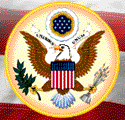 [Presidential Decision Directives - PDD]
[Presidential Decision Directives - PDD]
PDD/NSC 60
Nuclear Weapons Employment Policy Guidance
November 1997
NOTE: the actual text of this document is classified TS/ESI [TOP SECRET / EXTREMELY SENSITIVE INFORMATION] and is likely to remain so for many years to come.
The Quadrennial Defense Review (QDR), completed last spring, examined
U.S. nuclear strategy and force posture and reaffirmed the continuing
need for a robust and flexible nuclear deterrent. In the QDR, nuclear
forces were examined as an integral part of an overall review of
defense issues. This review followed a path which led from the threat,
to strategy, to force structure considerations, and finally to
resource issues.
In November 1997 the President signed a new Decision Directive on
nuclear weapons employment policy guidance. This directive was the
first revision of such guidance in over 15 years, although U.S.
nuclear plans have been updated regularly to changes to subordinate
documents and through Presidential Decisions such as the Presidential
Nuclear Initiatives and the Nuclear Posture Review. The directive
takes account of the changes in policy and force posture brought
on by the end of the Cold War and builds on the conclusions of
previous policy reviews, such as the NPR and QDR.
The directive describes, in general terms, the purposes of U.S.
nuclear weapons and provides broad Presidential guidance for
developing operational plans. It also provides guidelines for
maintaining nuclear deterrence and U.S. nuclear forces.
The directive indicates that the United States must maintain the
assured response capability to inflict "unacceptable damage" against
those assets a potential enemy values most. It also posits that the U.S.
must continue to plan a range of options to insure that the U.S. can
respond to aggression in a manner appropriate to the provocation,
rather than being left with an "all or nothing" response. The new
guidance also continues the policy that the U.S. will not rely on
"launch on warning," but will maintain the capability to respond
promptly to any attack, thus complicating an adversary's calculations.
However, the new guidance eliminates previous Cold War rhetoric
including references to "winning a protracted nuclear war."
The directive reaffirms that the United States should have a triad of
strategic deterrent forces to complicate an adversary's attack and
defense planning. It also notes that deterrent forces and their
associated command and control should be flexible and survivable, to
insure that the U.S. will be able to make an adequate and appropriate
response.
While the directive does not address arms control issues, per se,
analysis undertaken in accordance with the new guidance shows that the
U.S. strategic deterrent can be maintained at the 2,000 to 2,500
strategic weapon level envisioned for START III as agreed in the 1997
Helsinki accord.
RESOURCES:
 [Presidential Decision Directives - PDD]
[Presidential Decision Directives - PDD]